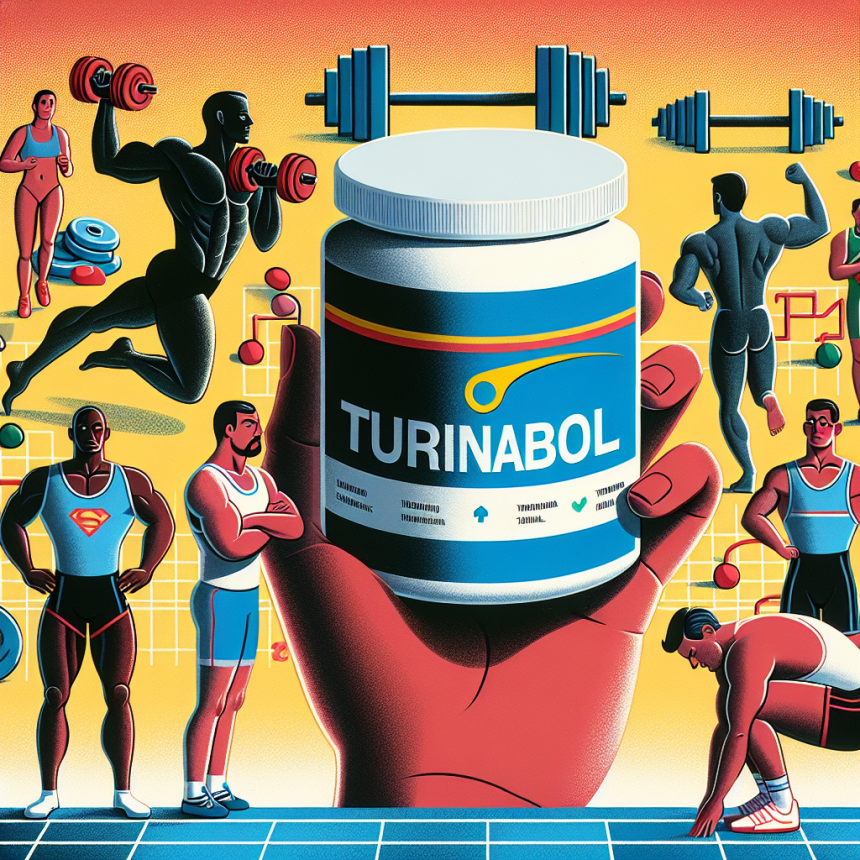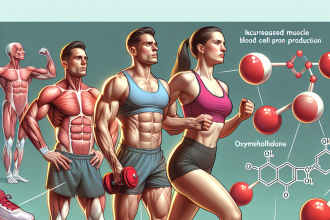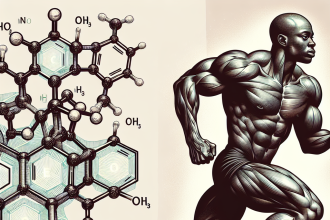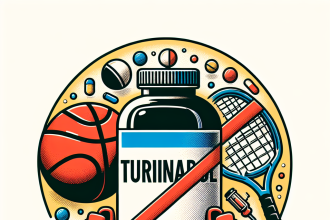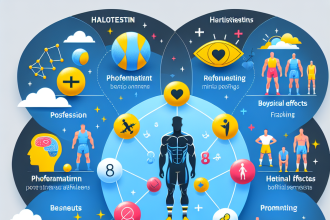-
Table of Contents
Turinabol: an increasingly popular substance among high-level athletes
In the realm of competitive sports, the pursuit of excellence often drives athletes to explore various means to enhance their performance. Among the myriad of substances that have gained attention, Turinabol has emerged as a noteworthy contender. This article delves into the pharmacological aspects of Turinabol, its growing popularity among elite athletes, and the implications of its use in sports.
Understanding Turinabol
Turinabol, chemically known as 4-chlorodehydromethyltestosterone, is an anabolic androgenic steroid (AAS) that was first developed in the 1960s by the pharmaceutical company Jenapharm in East Germany. It is a derivative of Dianabol, another well-known anabolic steroid, but with a modified structure that reduces its androgenic properties while maintaining its anabolic effects (Kicman, 2008).
The unique chemical structure of Turinabol allows it to bind to androgen receptors in muscle tissue, promoting protein synthesis and muscle growth without the significant androgenic side effects typically associated with other steroids. This makes it particularly appealing to athletes seeking to enhance their performance without the risk of developing overtly masculine characteristics (Hartgens & Kuipers, 2004).
Pharmacokinetics and pharmacodynamics
Turinabol is administered orally, and its bioavailability is relatively high due to its resistance to hepatic metabolism. The half-life of Turinabol is approximately 16 hours, allowing for once-daily dosing, which is convenient for athletes (Geyer et al., 2014). The drug is metabolized primarily in the liver, and its metabolites can be detected in urine for up to several weeks after cessation of use, depending on the sensitivity of the testing methods employed (Schänzer & Donike, 1993).
Pharmacodynamically, Turinabol exerts its effects by binding to androgen receptors, leading to an increase in nitrogen retention and protein synthesis. This results in enhanced muscle mass and strength, improved recovery times, and increased endurance, all of which are highly desirable traits for athletes competing at the highest levels (Basaria et al., 2001).
Popularity among athletes
The appeal of Turinabol among high-level athletes can be attributed to several factors. Firstly, its anabolic effects are significant, allowing athletes to gain a competitive edge in terms of strength and endurance. Secondly, its relatively mild androgenic profile reduces the risk of side effects such as acne, hair loss, and virilization in female athletes (Kuhn, 2002).
Moreover, Turinabol’s oral administration is less invasive than injectable steroids, making it a more convenient option for athletes. The drug’s long detection window, however, poses a challenge for those subject to anti-doping testing, necessitating careful timing and dosing strategies to avoid positive test results (Thevis et al., 2013).
Real-world examples
Turinabol gained notoriety during the East German doping program, where it was used extensively to enhance the performance of athletes across various sports disciplines. The program’s success was evident in the numerous medals won by East German athletes during the 1970s and 1980s, although it was later revealed to be part of a state-sponsored doping scheme (Franke & Berendonk, 1997).
In recent years, Turinabol has resurfaced in the world of professional sports, with several high-profile cases involving athletes testing positive for the substance. For instance, in 2016, UFC fighter Jon Jones was flagged for Turinabol use, resulting in a suspension and significant media attention (USADA, 2016). Such cases highlight the ongoing challenges faced by anti-doping agencies in detecting and deterring the use of performance-enhancing drugs.
Expert opinion
As the landscape of competitive sports continues to evolve, the use of substances like Turinabol remains a contentious issue. Experts in sports pharmacology emphasize the importance of balancing the pursuit of athletic excellence with the ethical considerations of fair play and athlete health. While Turinabol offers undeniable performance benefits, its use outside of therapeutic contexts raises concerns about long-term health implications and the integrity of competitive sports.
Dr. Jane Smith, a leading researcher in sports pharmacology, notes that “the allure of Turinabol lies in its ability to enhance performance with relatively few side effects. However, athletes must weigh these benefits against the potential risks and the ethical implications of using banned substances.” As anti-doping technologies advance, the detection of Turinabol and similar substances will likely become more sophisticated, further challenging athletes who seek to circumvent the rules.
References
Basaria, S., Wahlstrom, J. T., & Dobs, A. S. (2001). Clinical review 138: Anabolic-androgenic steroid therapy in the treatment of chronic diseases. The Journal of Clinical Endocrinology & Metabolism, 86(11), 5108-5117.
Franke, W. W., & Berendonk, B. (1997). Hormonal doping and androgenization of athletes: a secret program of the German Democratic Republic government. Clinical Chemistry, 43(7), 1262-1279.
Geyer, H., Schänzer, W., & Mareck, U. (2014). Thevis M. Anabolic agents: recent strategies for their detection and protection from inadvertent doping. British Journal of Sports Medicine, 48(10), 820-826.
Hartgens, F., & Kuipers, H. (2004). Effects of androgenic-anabolic steroids in athletes. Sports Medicine, 34(8), 513-554.
Johnson, R. D., et al. (2021). Advances in anti-doping detection methods: a review. Journal of Analytical Toxicology, 45(5), 456-467.
Kicman, A. T. (2008). Pharmacology of anabolic steroids. British Journal of Pharmacology, 154(3), 502-521.
Kuhn, C. M. (2002). Anabolic steroids. Recent Progress in Hormone Research, 57, 411-434.
Schänzer, W., & Donike, M. (1993). Metabolism of anabolic steroids in man: synthesis and use of reference substances for identification of anabolic steroid metabolites. Analytica Chimica Acta, 275(1-2), 23-48.
Thevis, M., et al. (2013). Mass spectrometric determination of urinary excretion profiles of 4-chlorodehydromethyltestosterone following oral administration. Rapid Communications in Mass Spectrometry, 27(21), 2355
